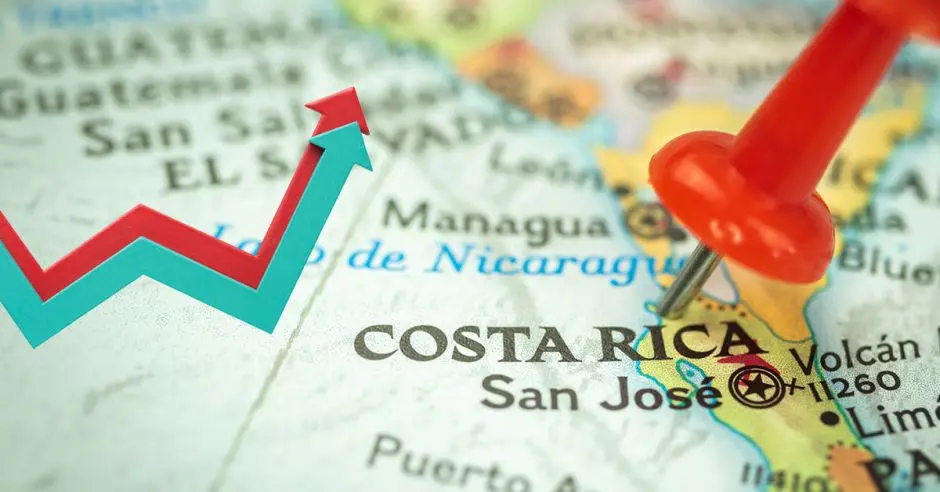The future development of Central American countries will depend on a variety of factors, but currently, some are facing structural challenges that could influence their long-term growth.
Knowing for certain which country will be the most developed in Central America in 50 years is complicated, but according to ChatGPT, some current factors that could influence future development can be considered.
In response, the Salvadoran media outlet La PrensaGráfica asked the Artificial Intelligence (AI) tool which country in the region could rank number one in development, and it answered that there are two countries that could compete for that position: Costa Rica and Panama.
“In a long-term analysis, the development prospects for Central American countries vary considerably.” “But there are two countries that stand out with greater potential for growth and sustained development over the next 50 years, thanks to key factors such as political stability, investment in education, economic diversification, and environmental sustainability,” said ChatGPT.
1 Costa Rica
Costa Rica has paved its way towards development through a model based on education, social peace, and sustainability. With a diversified economy that includes eco-tourism, technology, and renewable energy, this Central American country has managed to maintain stable and resilient growth. The country’s focus on sustainability places it in a unique position to tackle the challenges of climate change, which could make it a regional benchmark in green development.
Moreover, its political stability and focus on education as a driver of change ensure that Costa Rica continues to attract foreign investment in key sectors such as technology and services.
2 Panama
For its part, Panama has established itself as a logistics and financial hub thanks to the Panama Canal, an infrastructure that will remain key to global trade in the coming decades, according to artificial intelligence.
“With an economy oriented towards international trade, banking, and services, Panama has managed to diversify its economic base and improve its infrastructure, which places it in a favorable position for the future,” explained the AI.
Moreover, it said that the growth of the digital economy and the technology sector also play a crucial role in the country’s development. With significant investments in telecommunications and technology services, Panama seems well-positioned to continue growing. However, its main long-term challenge will be managing social inequalities and improving equity in access to the benefits of growth.
3 El Salvador and Guatemala
After Costa Rica and Panama, El Salvador and Guatemala emerge as countries with growth potential, although they face significant challenges.
El Salvador has experienced significant progress in recent years. The adoption of emerging technologies, such as the use of bitcoin, and investments in infrastructure could offer new opportunities. However, the country must overcome challenges related to security and violence in order to attract more investment and sustain its growth.
Guatemala, for its part, with the largest population in the region, has a relatively large and diverse economy. While it faces problems of poverty, inequality, and corruption, improvements in governance and investment in infrastructure could catapult its development.
4 Honduras and Nicaragua
At the bottom of the list, Honduras and Nicaragua face more serious challenges that could hinder their long-term development.
Honduras struggles with high levels of violence and poverty, in addition to the lack of structural reforms that would improve its economic and social situation. Without significant changes on these fronts, it is likely to remain behind.
Nicaragua faces an even more complicated situation due to the political instability and the authoritarianism of the current government. Despite its potential in natural resources and agriculture, international sanctions and the lack of confidence in its investment climate have hindered its development. Unless drastic changes occur in its political and economic system, Nicaragua risks being left behind in the region.
5 Belize
Finally, Belize, with its small population and economy based on tourism and agriculture, could maintain an intermediate position in the region. Although it faces challenges stemming from its vulnerability to natural disasters and infrastructure limitations, its position in the Caribbean and attractive tourism offerings can secure it a stable place within the Central American context.
General perspective
While Costa Rica and Panama seem destined to lead the region’s development in the coming decades, the future of other countries like El Salvador and Guatemala will depend on their ability to address social and governance issues.
In contrast, Honduras, Nicaragua, and Belize will have to overcome deeper obstacles if they wish to improve their position in the Central American landscape.
The future of Central America will be marked by the ability of these countries to adapt to the demands of the 21st century, from technology to environmental sustainability. (https://thecostaricanews.com/costa-rica-will-be-the-most-developed-central-american-country-in-50-years-according-to-artificial-intelligence/)



































